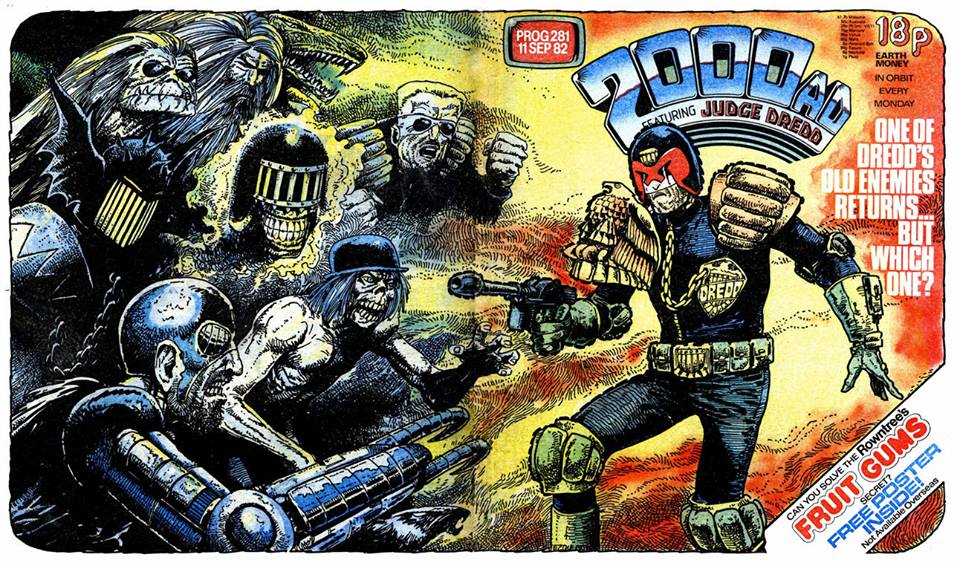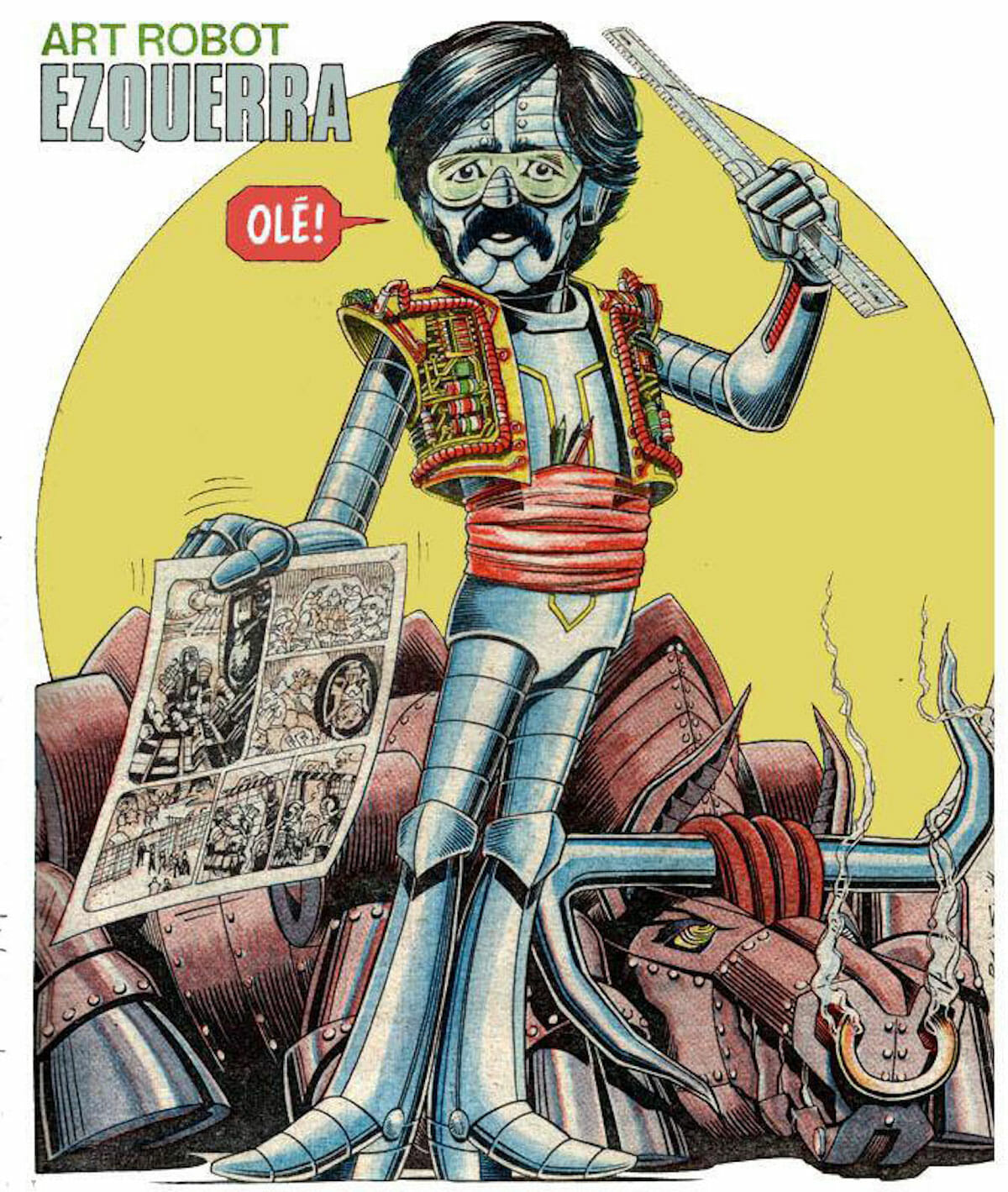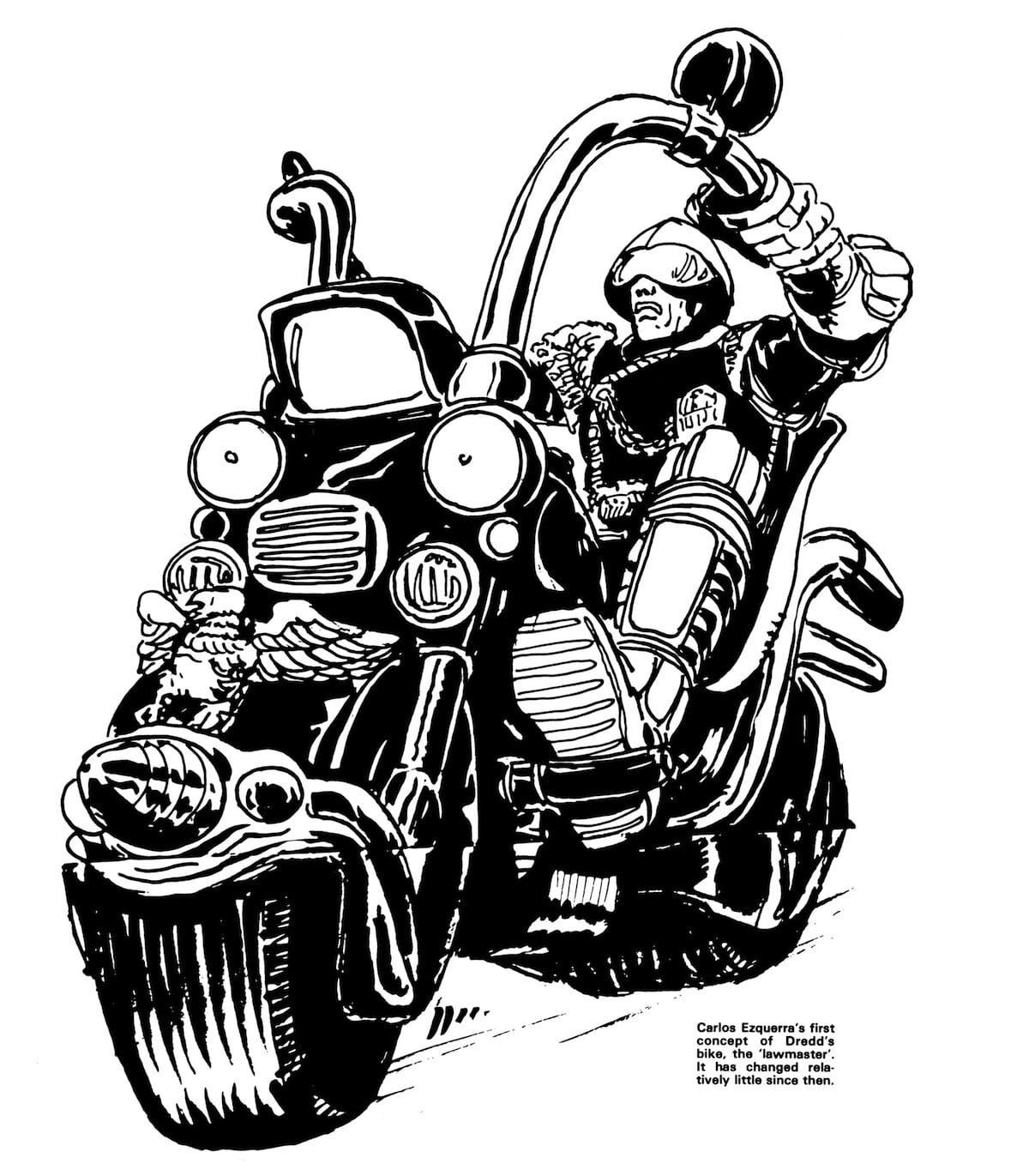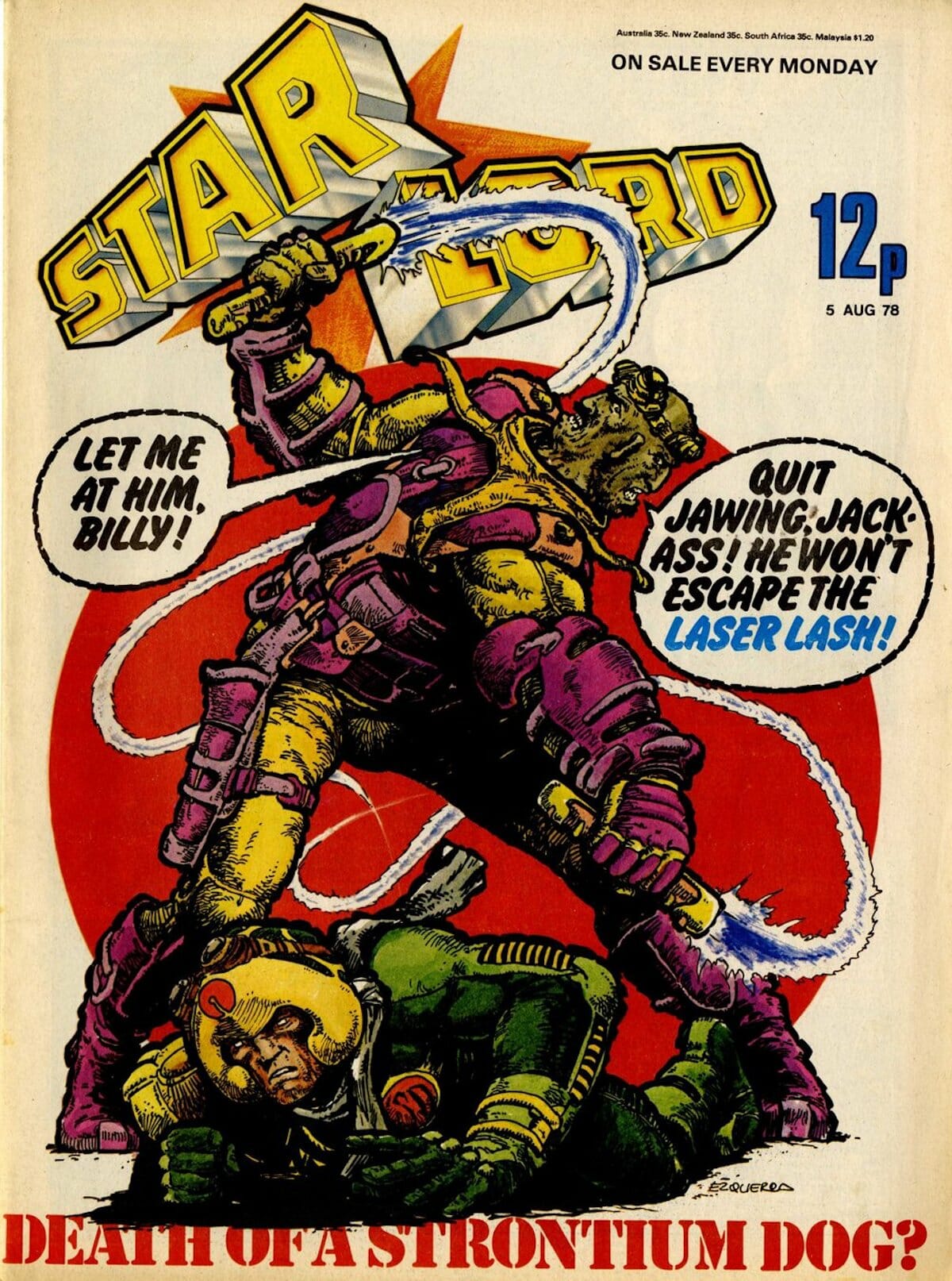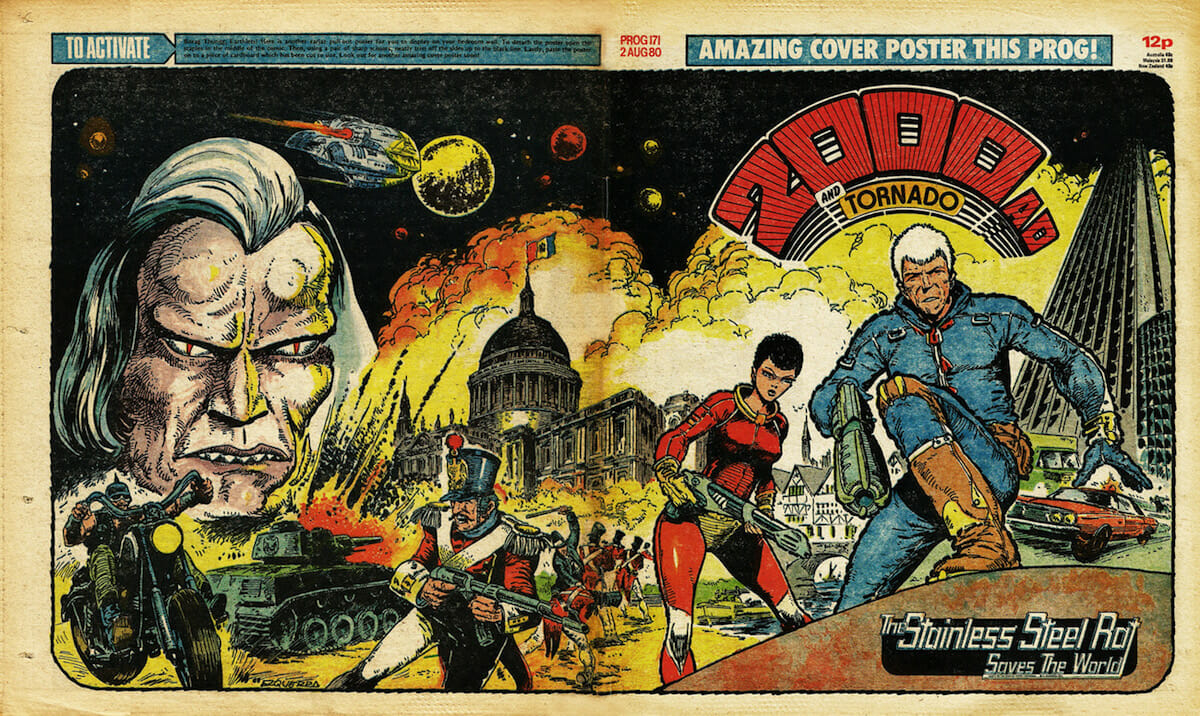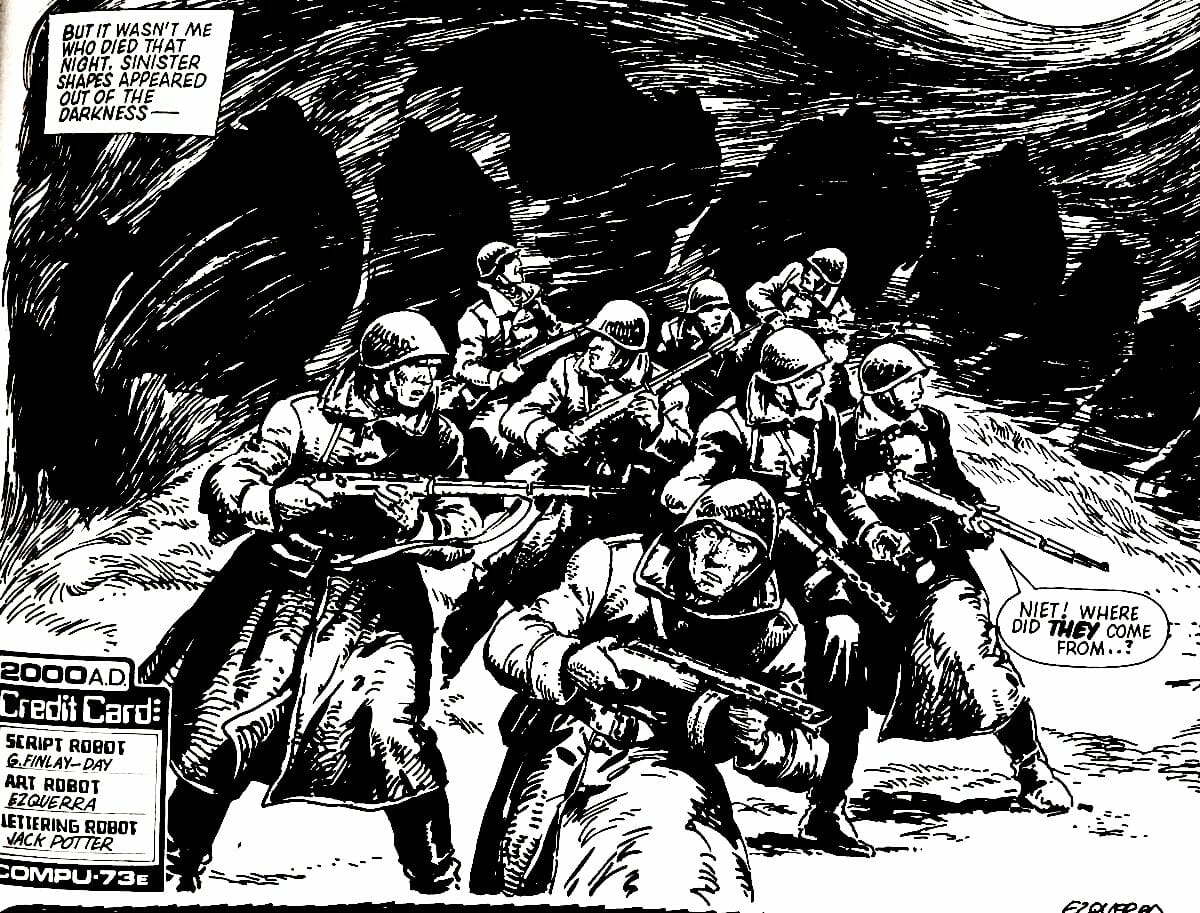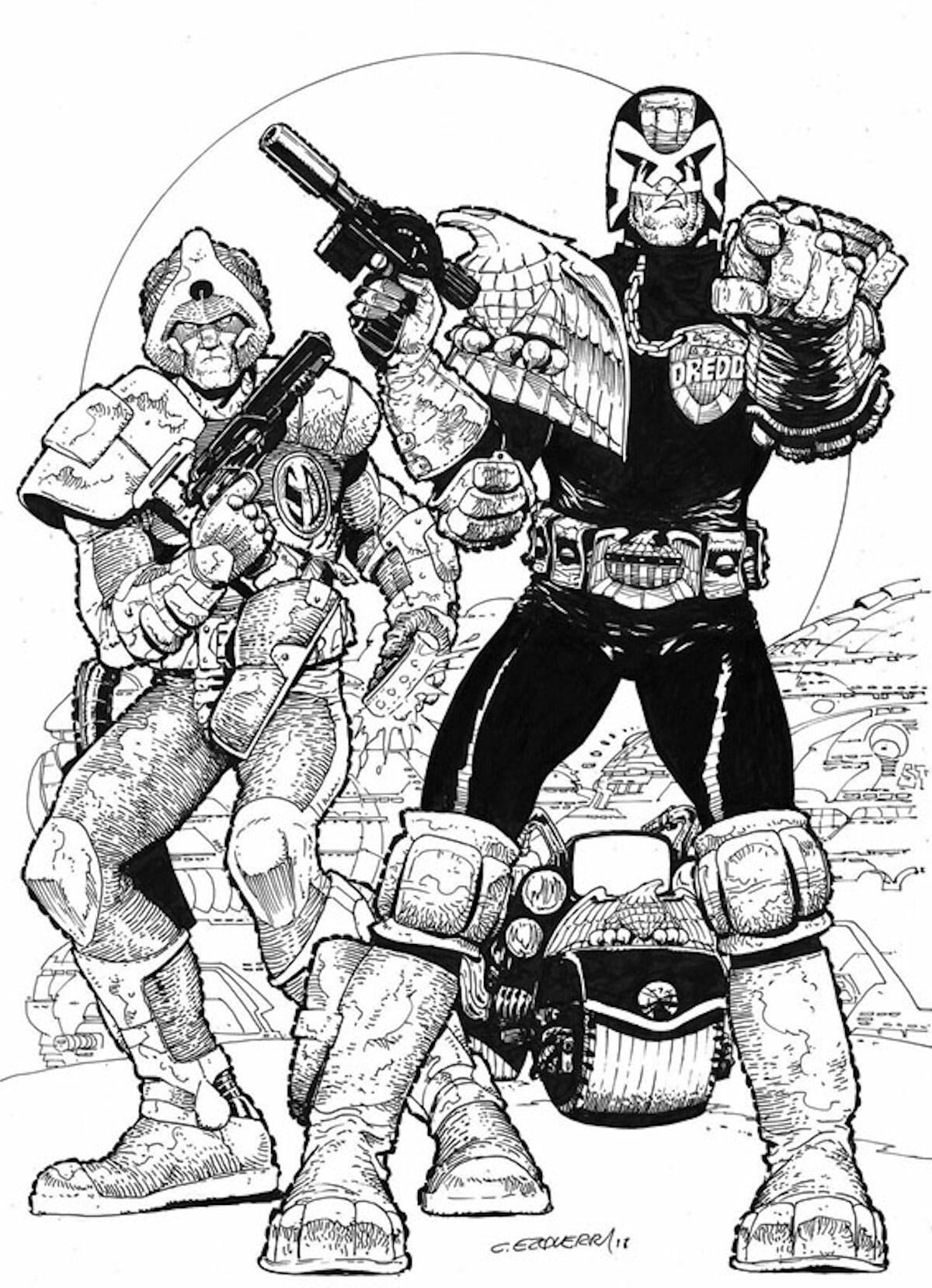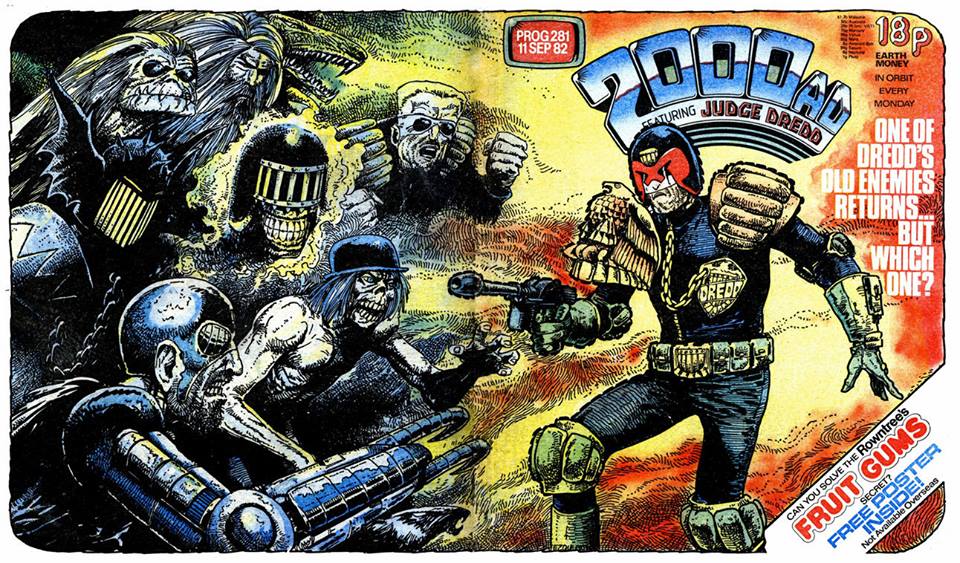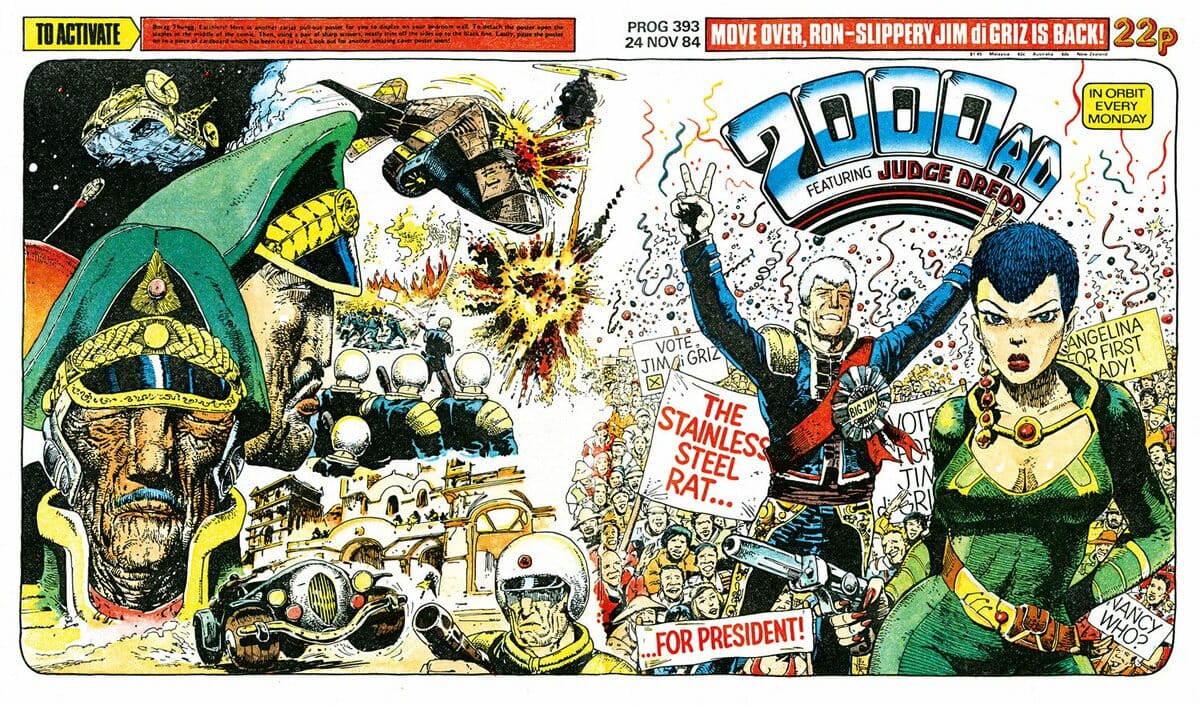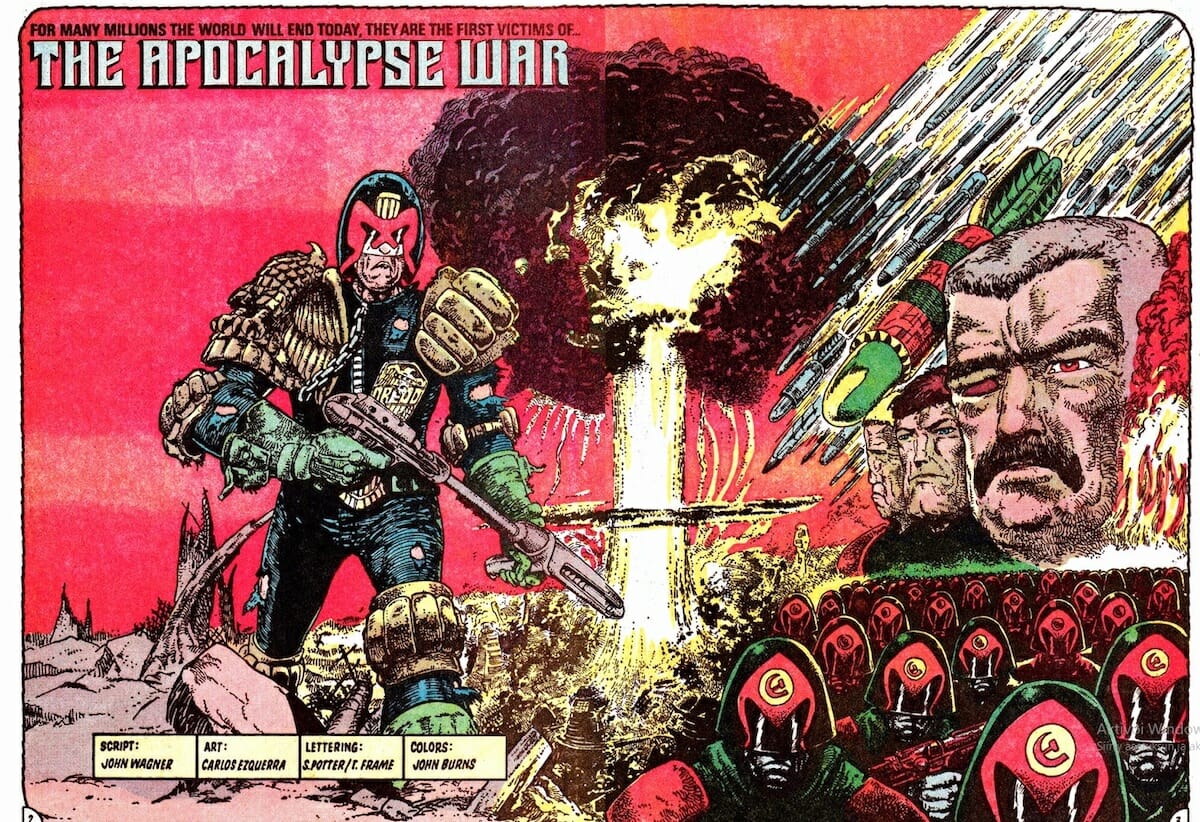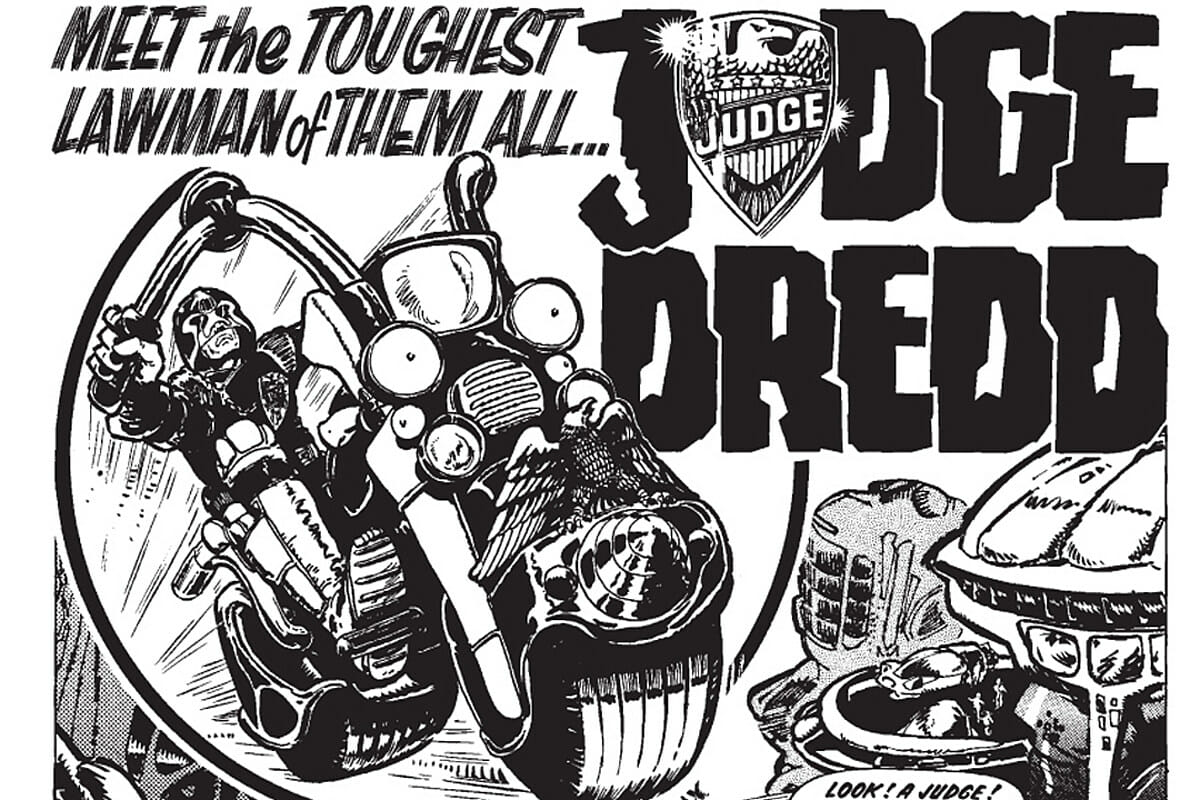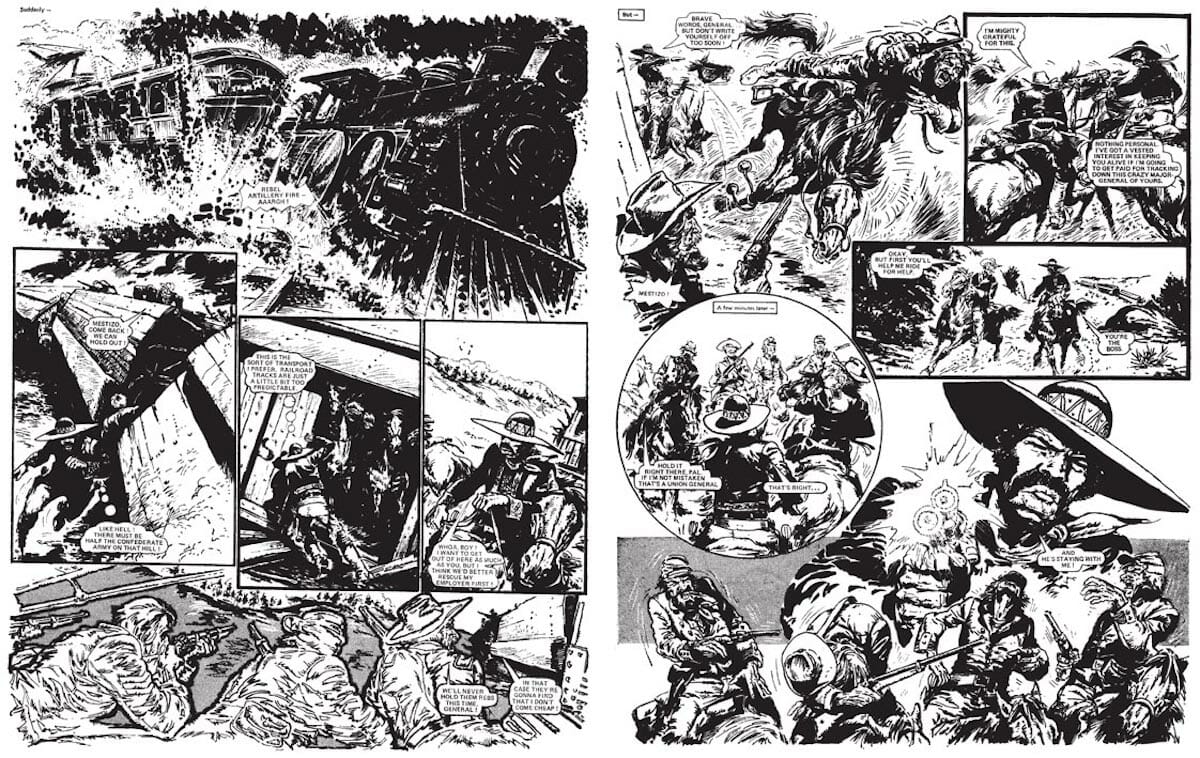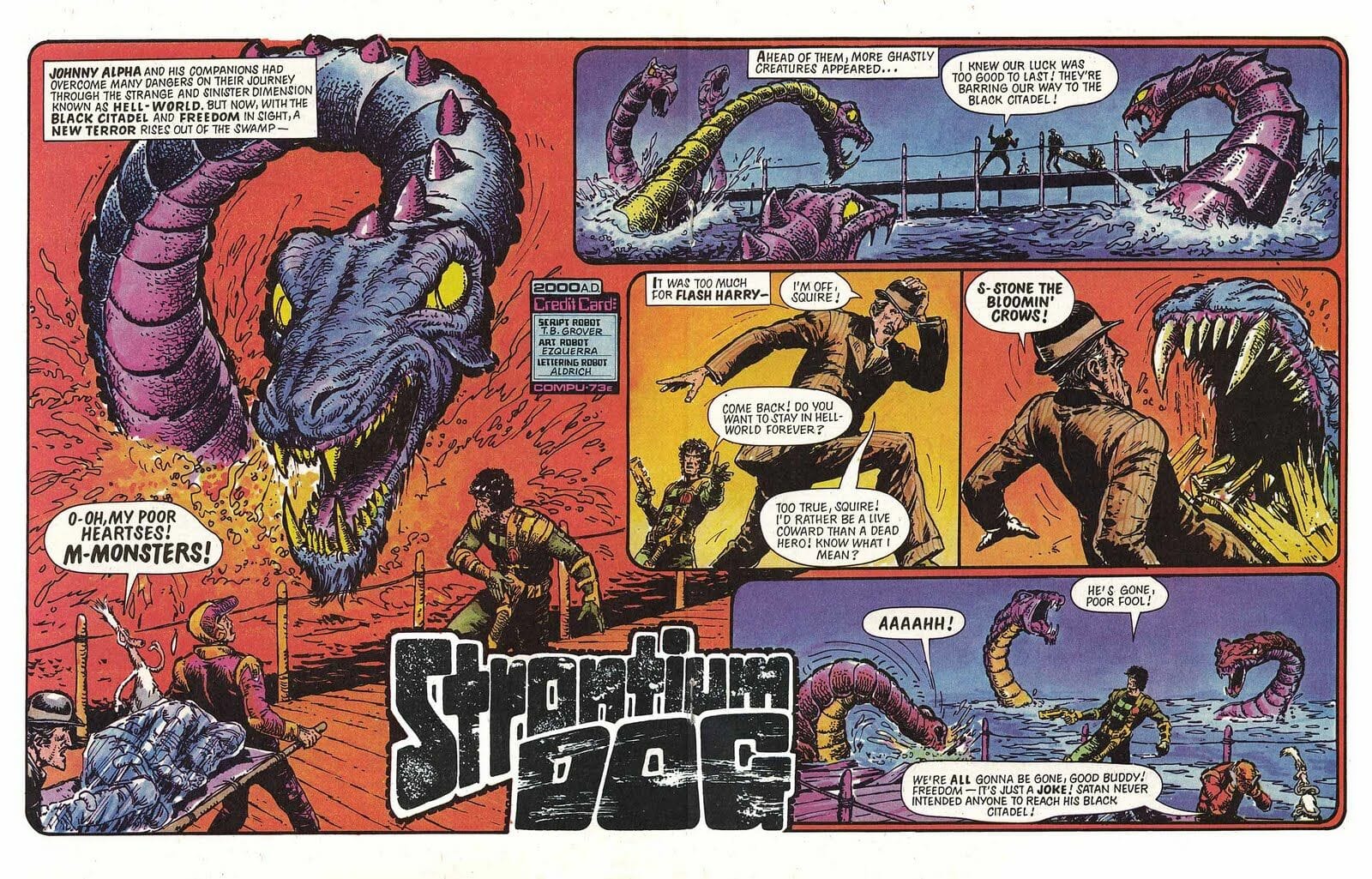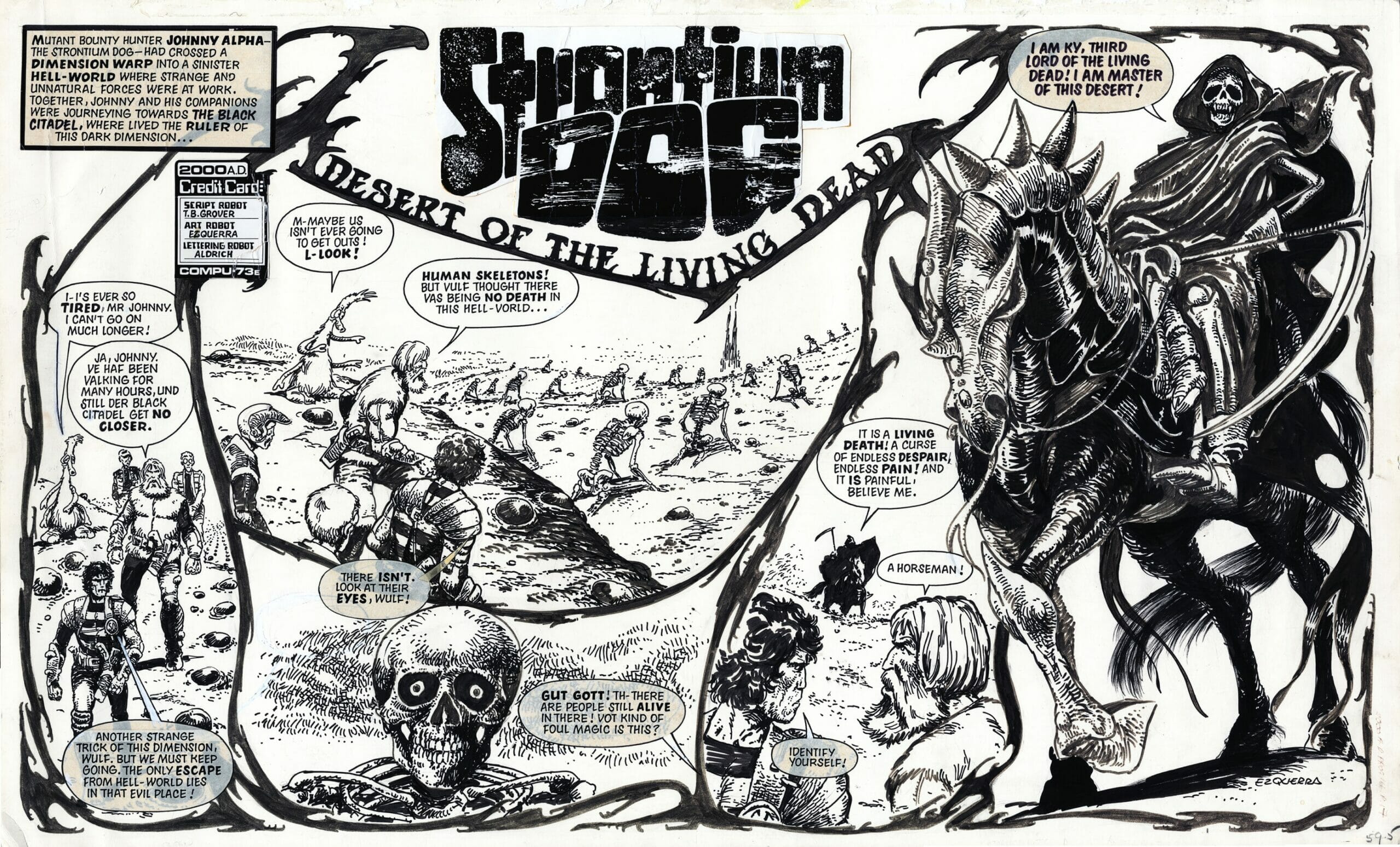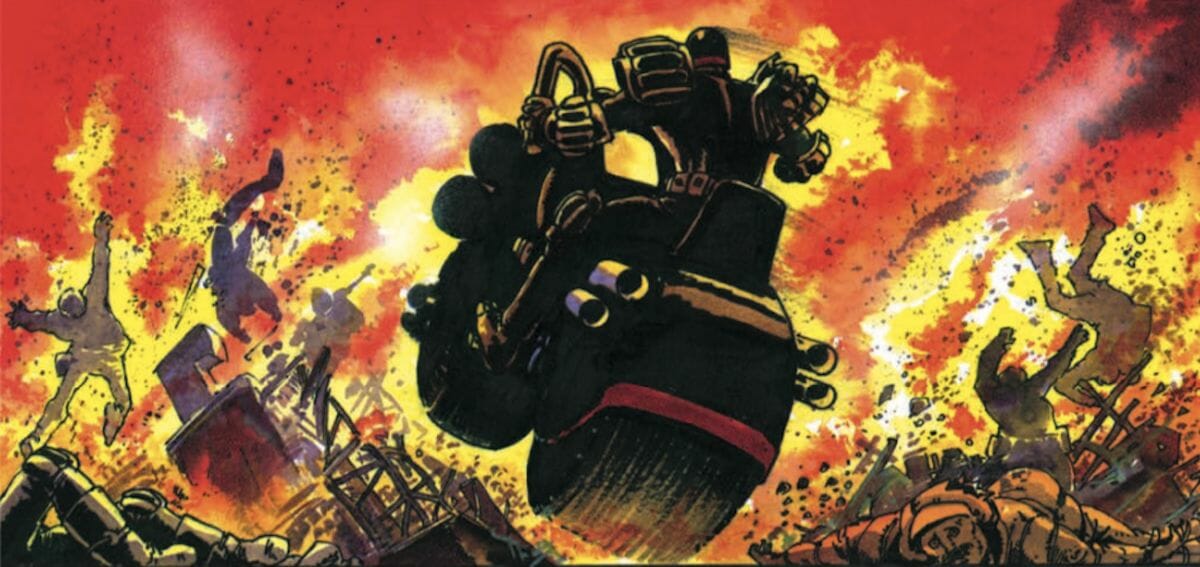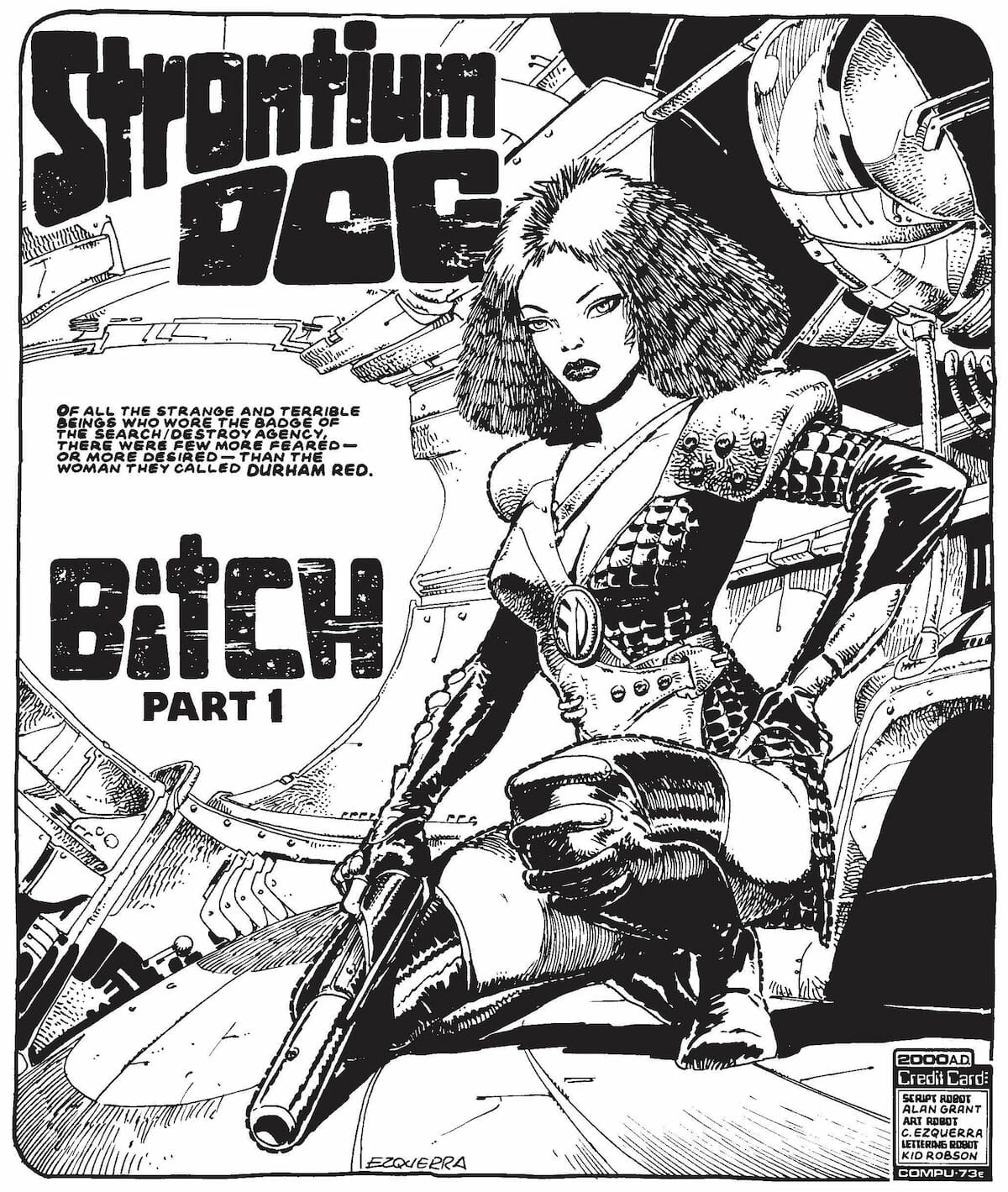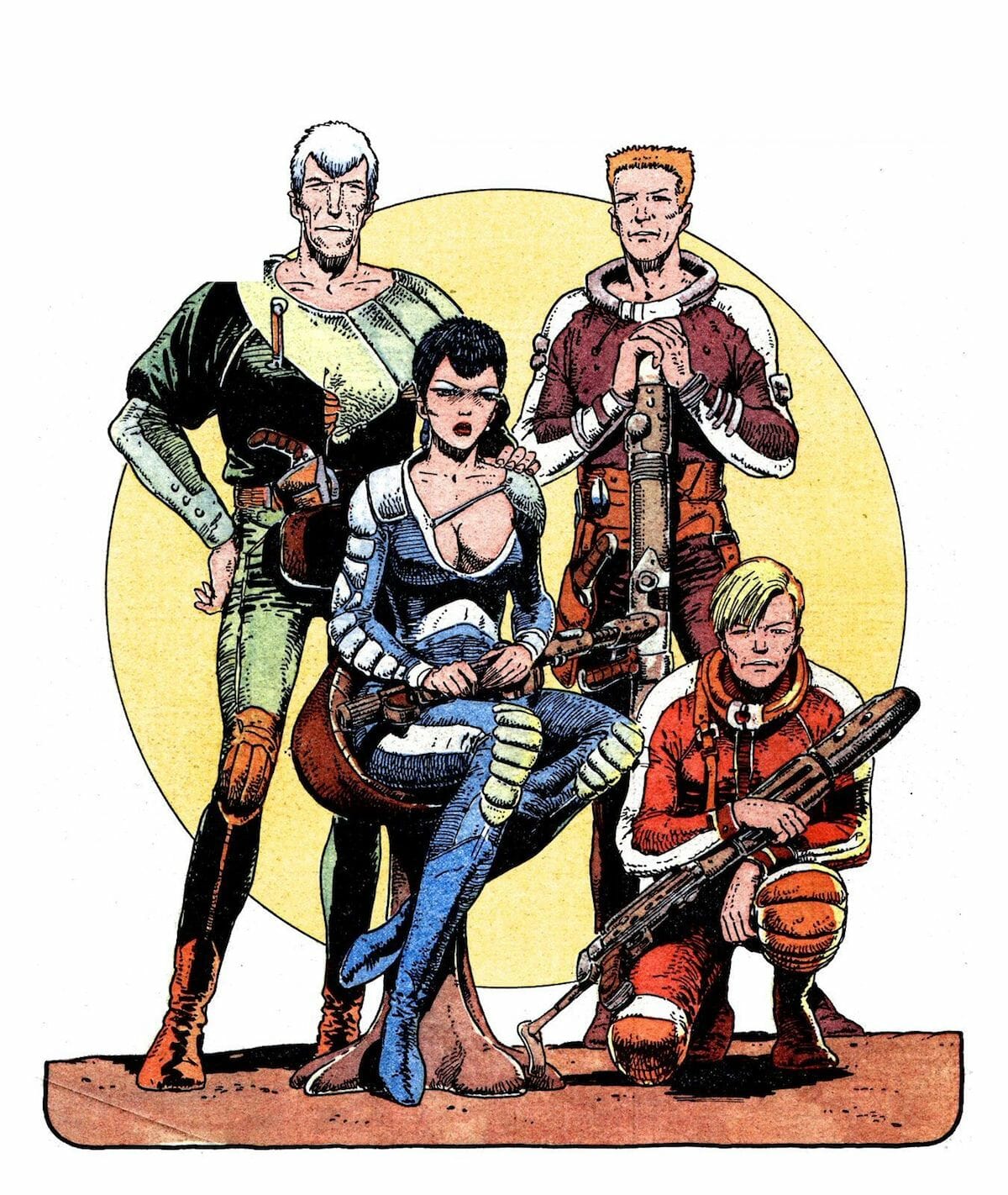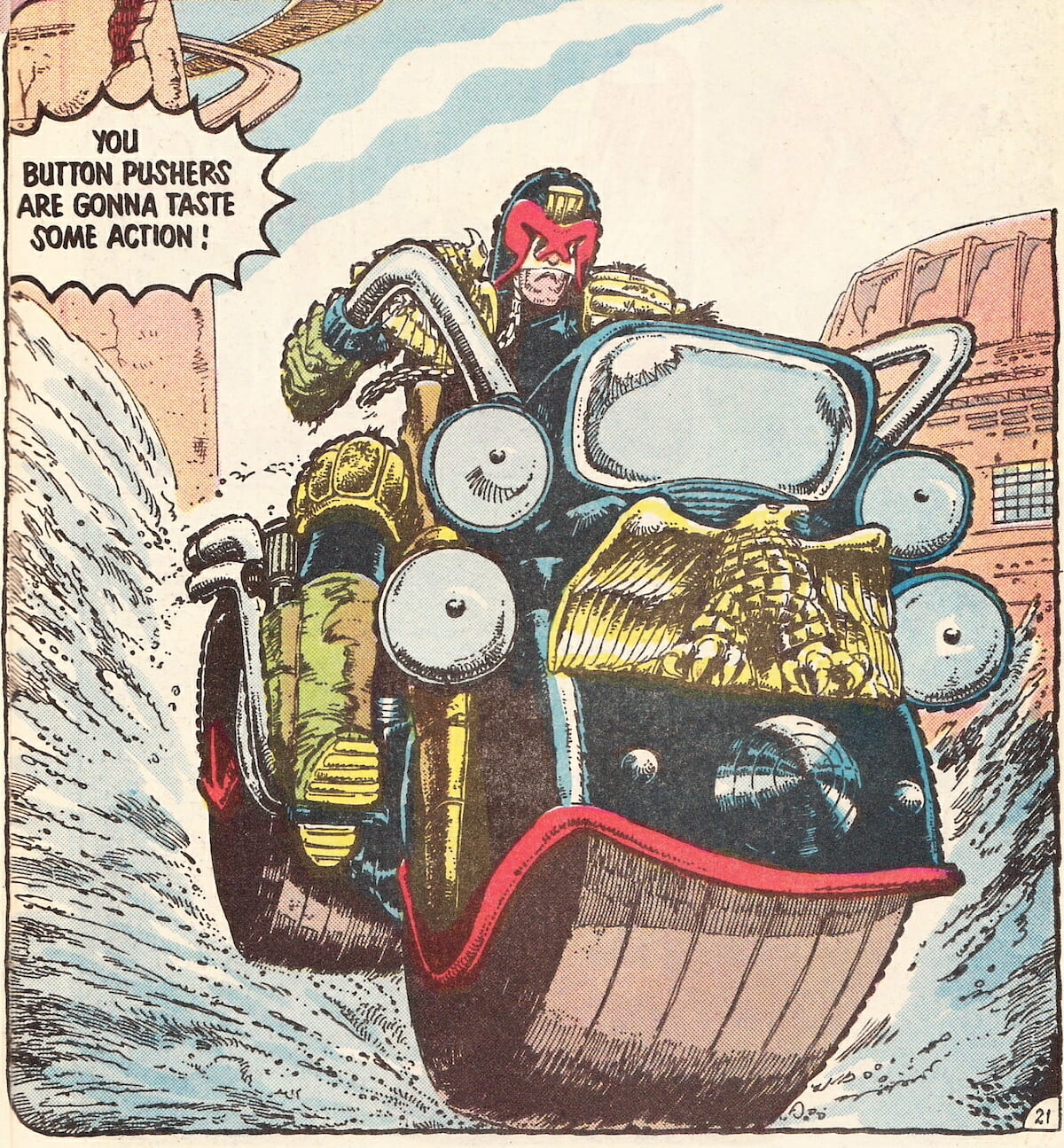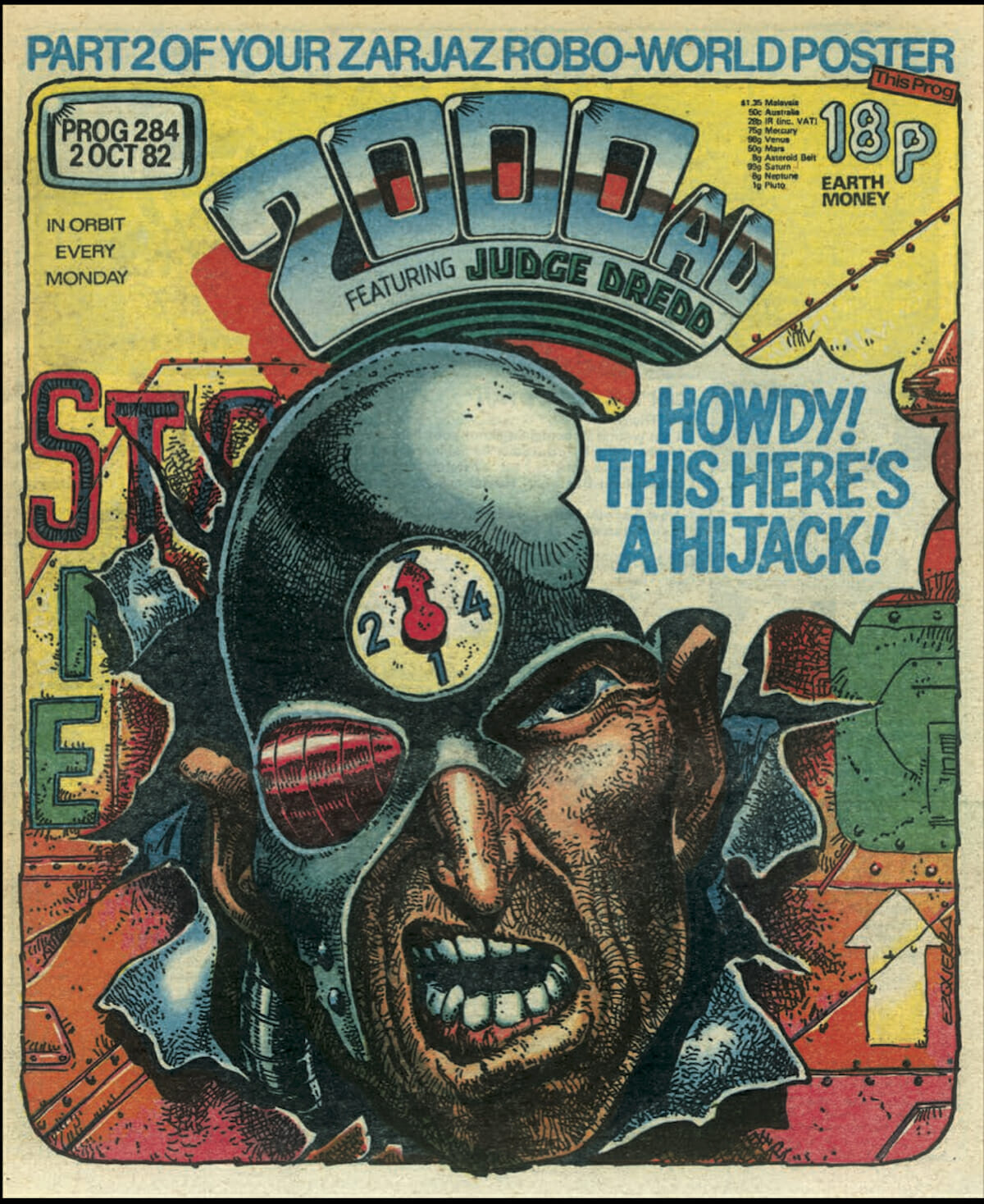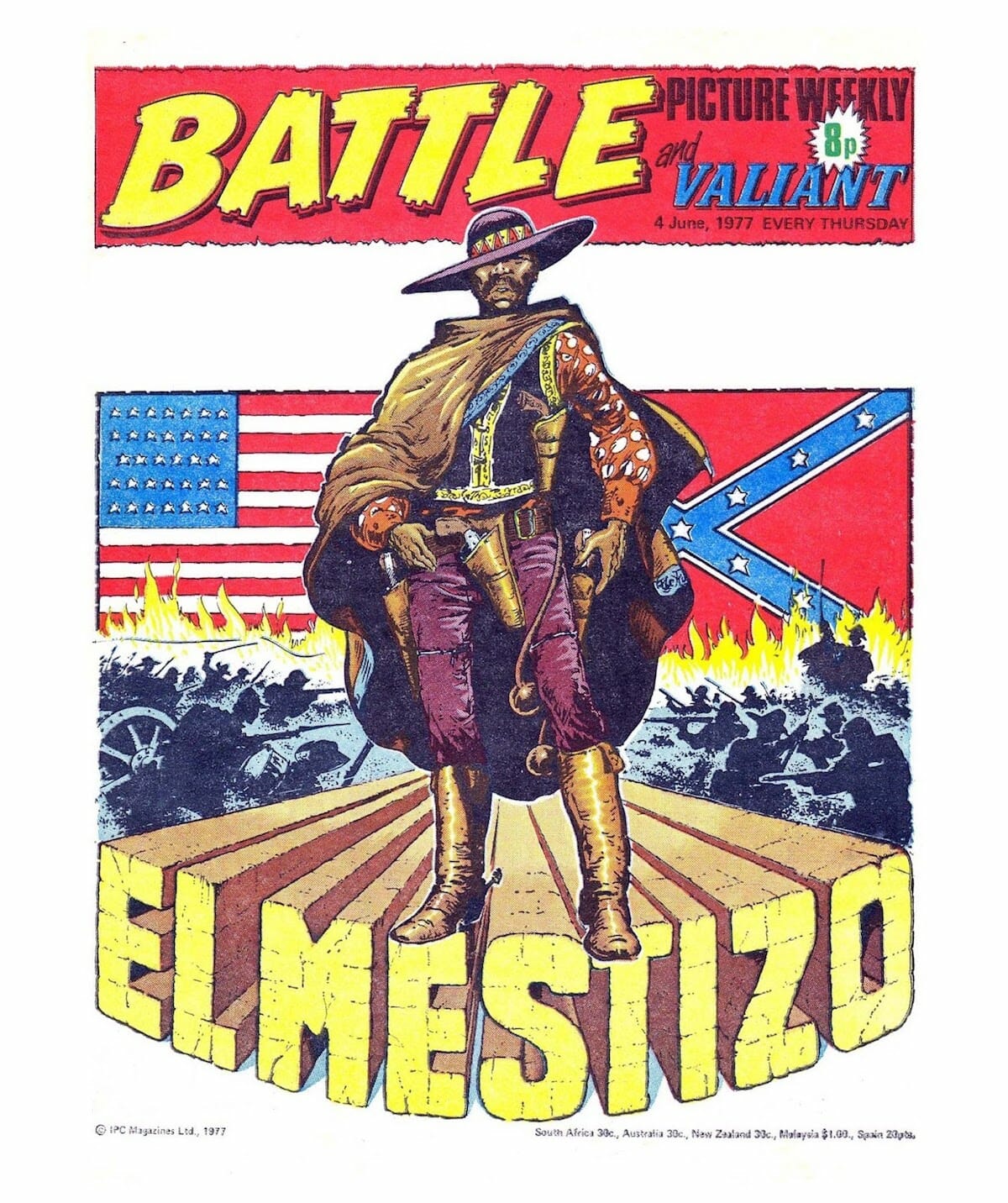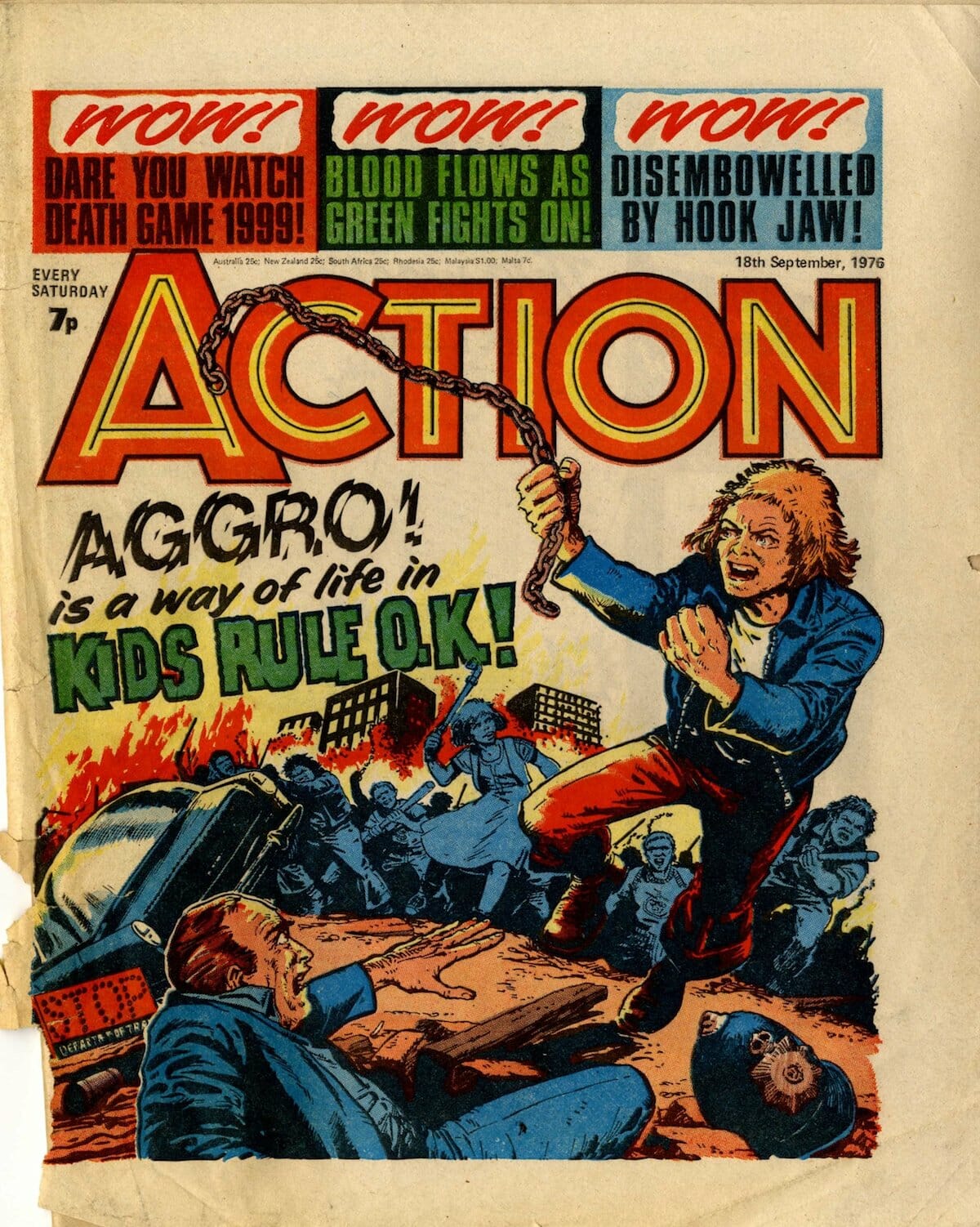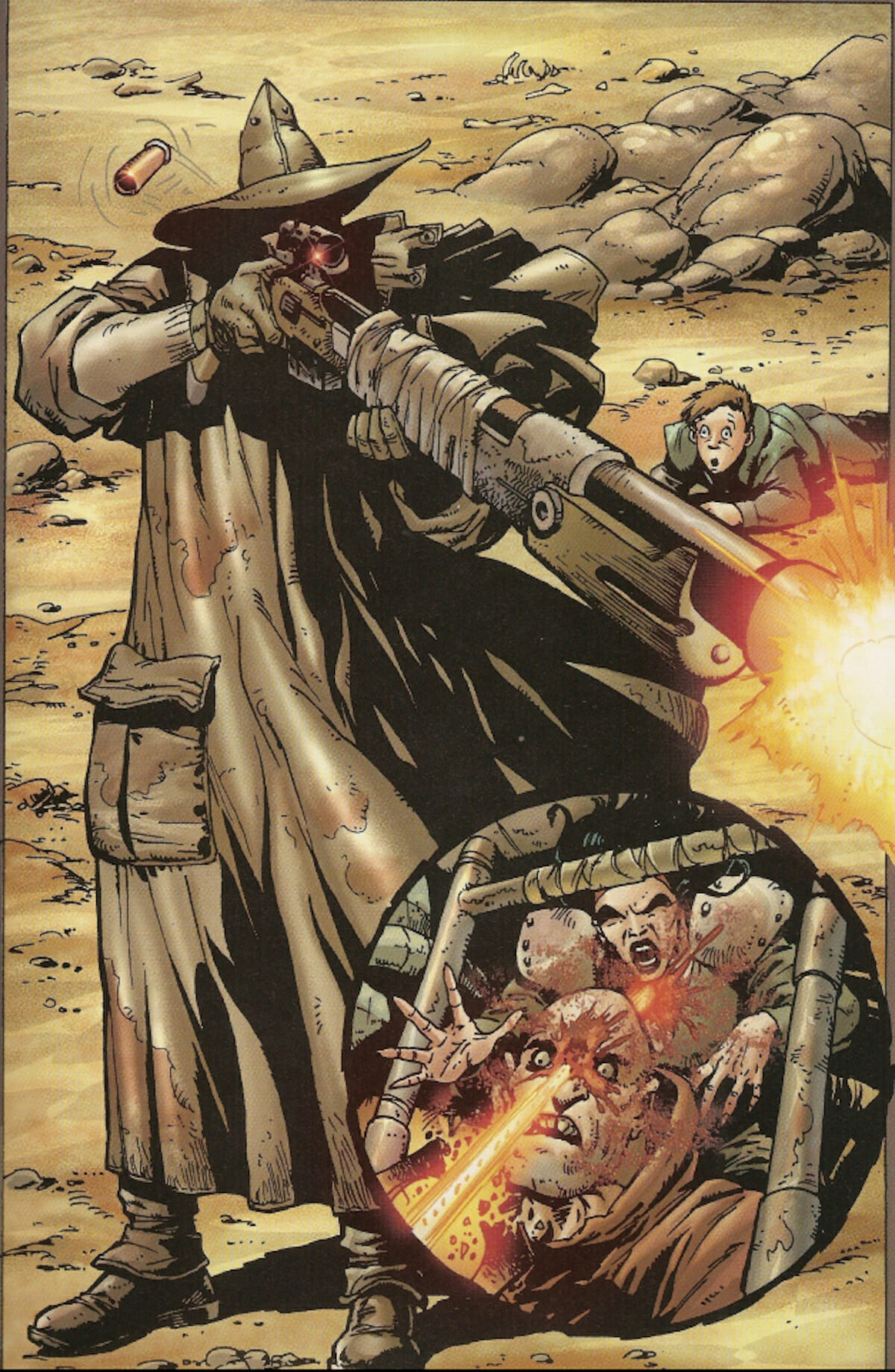It’s a strange thing to say about a man born in Spain, and who died in the Principality of Andorra, but Carlos Ezquerra might be the closest thing British comics ever had to Jack Kirby.
Like Kirby, Ezquerra’s work — or at least his influence — is likely familiar even to those who wouldn’t necessarily recognize his name. As the co-creator of the ever-surly Judge Dredd, as well as a number of other characters and comic strips including Strontium Dog, Bloody Mary, and El Mestizo, Ezquerra’s design work and particular aesthetic is something that has extended far beyond the individual comics he illustrated in a career spread across five decades and multiple countries, with work for publishers including IPC, Fleetway and DC.
His Dredd design — massive shoulder pads, oversize boots and knee-pads and, of course, that iconic helmet, all tricks he’d repeat for the subsequent Strontium Dog, which arguably refined the look even further and works better on a purely visual level — is so strong that Ezquerra’s style defined the strip from the very start, despite the fact that he didn’t actually draw any of the initial episodes due to conflicts between editors and Ezquerra over ownership of the character. His art did make it into the first episode, as art editors cut up an unused pilot episode to provide an appropriately dramatic opening image to an installment otherwise illustrated by a young Mike McMahon, but Ezquerra didn’t draw a full Dredd until episode 5.
Again similar to Jack Kirby, while Ezquerra is closely associated with one particular genre of comics — in his case, the sci-fi action of 2000 AD and related titles, including Starlord and Crisis — his career expands across a surprising range of material. His earliest English language work came in the early 1970s, and appeared in both romance titles like Valentine and Mirabelle in addition to series like Pocket Western Library and DC Thompson’s The Wizard, a boys’ adventure anthology which specialized in war and action stories.
It was his work in the latter title that caught the attention of Pat Mills and John Wagner, future creators of 2000 AD and, at that point in their career, young editors at IPC. They brought Ezquerra onto the new launch Battle Picture Weekly, where he draw both Dirty Dozen knock-off Rat Pack and Major Eazy, the first of three separate series in which Ezquerra would model the lead character after his favorite actor, James Coburn. (The other two were 2000 AD’s adaptation of The Stainless Steel Rat novels, and Cursed Earth Koburn, the latter of which being a Judge Dredd spin-off that appeared in Judge Dredd Megazine which was created purposefully to accommodate Ezquerra’s love of the actor. As it turned out, he did a pretty good Coburn likeness.)
Although Dredd would take up much of Ezquerra’s time after he started illustrating the series — he would continue working on it irregularly for four decades after the character’s debut in 1977, most often in partnership with Wagner, with whom he’d created the character; his final work in the series appearing in late 2017 — it was far from the only thing occupying his time. In addition to Strontium Dog, a serial he almost exclusively illustrated for a decade for both Starlord and 2000 AD, he also illustrated both Fiends of the Eastern Front, a World War I story featuring vampires, and the occasional tongue-in-cheek strip featuring Tharg, 2000 AD’s fictional alien editor.
Beyond 2000 AD, Ezquerra was the visual anchor for Crisis, the socially- and politically-aware anthology series launched by Fleetway in the late 1980s, co-creating and illustrating the first 14 episodes of the strip Third World War, and he’d re-team with John Wagner for the hilarious title Al’s Baby, a comedy serial in which a mob enforcer ends up pregnant in an attempt to give his boss a grandchild. (Trust me, you had to be there.) A relationship with Garth Ennis born of collaborations on the Judge Dredd serial would lead to Ezquerra breaking into the U.S. market with a number of Ennis-written projects including War Stories, Adventures in the Rifle Brigade and a couple of spin-offs from Ennis’ popular Preacher series — bringing the artist back to the western genre he had worked on decades earlier.
Another similarity between Kirby and Ezquerra is the fact that their individual styles, which are far from similar, both proved to be somewhat of an acquired taste for readers. Both artists were succeeded on their most famous creations by artists with slicker, more “realistic” stylizations — Ezquerra by Brian Bolland on Dredd, Kirby by John Buscema, and later John Byrne, on Fantastic Four — that quickly became the norm for mainstream audiences when imagining the characters, leaving both Kirby and Ezquerra’s more specific, chunkier, weirder looks feel more like outliers for a large number of fans.
Ezquerra certainly had a number of stylistic quirks that made his work stand out from the crowd; his black and white work often featured a thick broken black line surrounding figures in the foreground, and his figures conformed to recurring physical themes: the men would have heavy chins and, with the exception of Dredd himself, a smirk, and the women would have large eyes, thick lips and a femme fatale appeal that spoke, more than likely, of Ezquerra’s own taste. His panel and page layouts were purposefully off-kilter and non-uniform, emphasizing dynamism and action in ways that, to be blunt, contemporary comic artists could stand to learn from. His work was far from the norm, and all the better for that — even if that meant that some readers would occasionally shy away from it in mild terror.
Ezquerra died in 2018, midway through illustrating another new creation invented with John Wagner. (The incomplete strip, Spector, was published the following year.) He was a beloved figure in British comics, and amongst those in the know elsewhere, but it’s more than fair to say that he was never afforded the true respect and plaudits due to him during his career, and his life. That, perhaps, is the final — and saddest — way in which his career mirrors Jack Kirby’s. Hopefully, he can be properly recognized posthumously as the comics giant he undoubtedly was.
